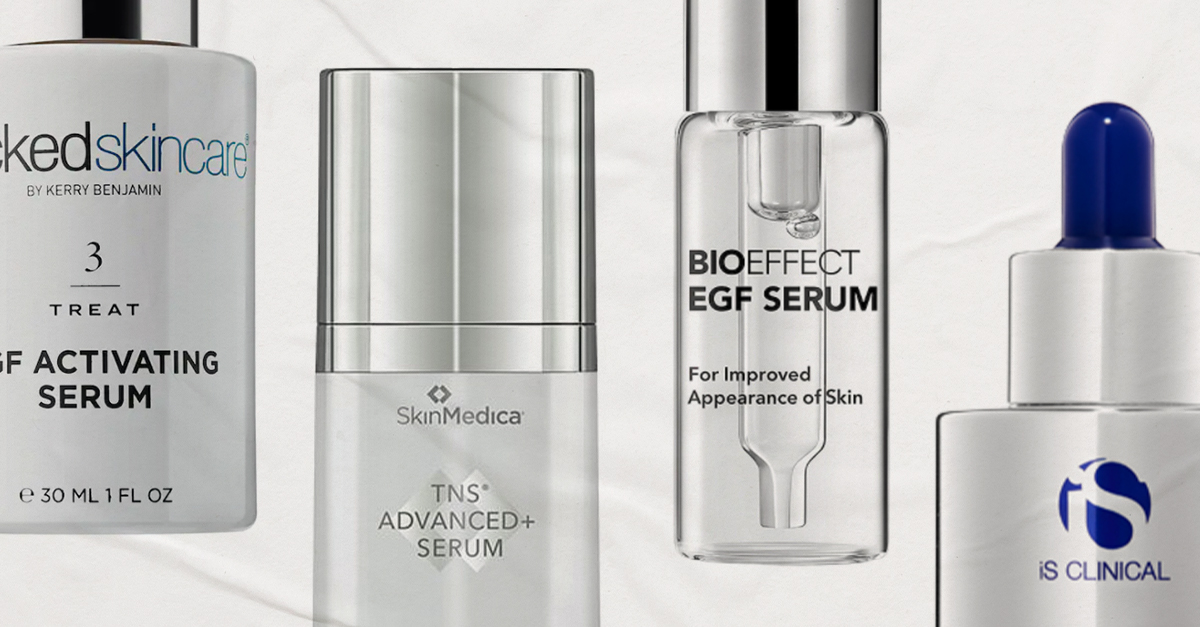
While the dermatologists I spoke to were all proponents of growth factors, it is a controversial topic. Some derms question whether topical growth factors can be effective without delivery through microneedling or laser resurfacing, claiming their molecules are too large to effectively penetrate the top layer of the epidermis. There is also concern that because growth factors are mitogenic, theoretically, they could cause cancer cells to replicate, however, there hasn’t been any evidence pointing to topical growth factors doing that.
“Growth factors are molecules, enzymes, and are particular pathways that contribute to cell proliferation, or cellular growth and turnover. The reason there is a little controversy is because unchecked cellular growth is, by definition, cancer,” explains Henry. “So there was always this concern, especially in the early iterations, that if we’re using these growth factors, could it simulate skin cancer. Now, a lot of formulations have been changed, and we better understand whatever growth factors are in this particular serum or cream, and what pathways they activate, but prior to that we didn’t.”
There’s also the issue of where the growth factor can come from. In 2018, Sandra Bullock and Cate Blanchett caught flack for talking about a $650 “penis facial” they had gotten at celebrity esthetician Georgia Louise’s spa. The growth factors used in the serum were “derived from the progenitor cells of the human fibroblast taken from Korean newborn baby foreskin.” SkinMedica’s serum also uses growth factor proteins that are lab-created but were derived from the stem cells of a single neonatal foreskin over 20 years ago. But if you’re curious about growth factors and would rather not use anything connected to human cells, opt for a plant-based product.







